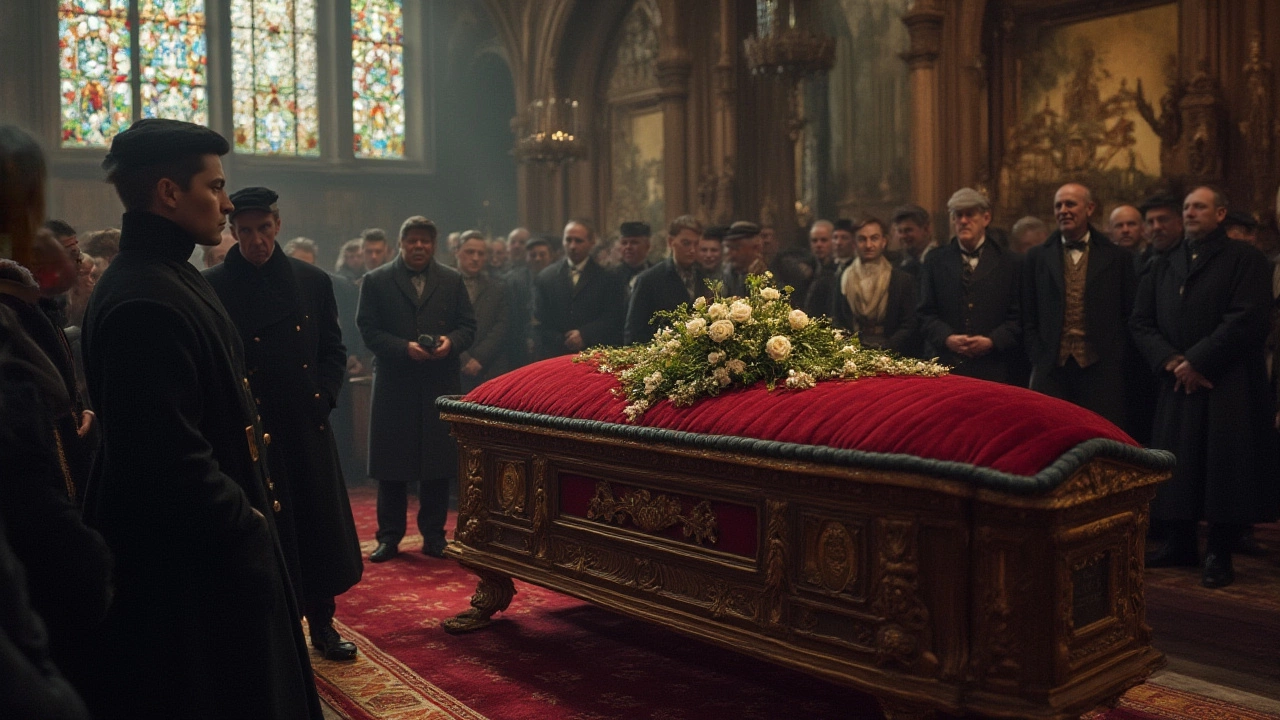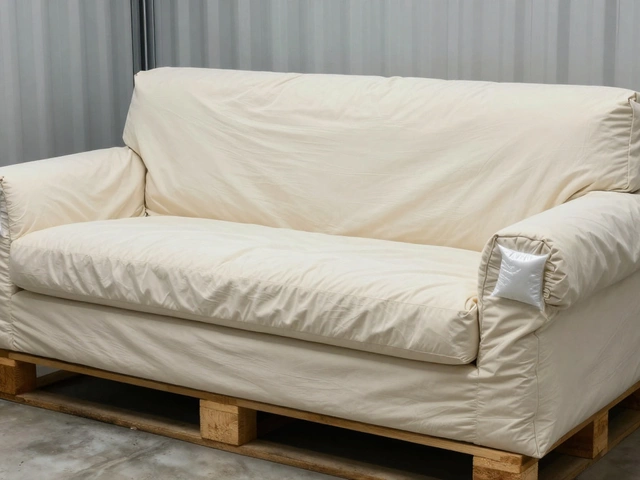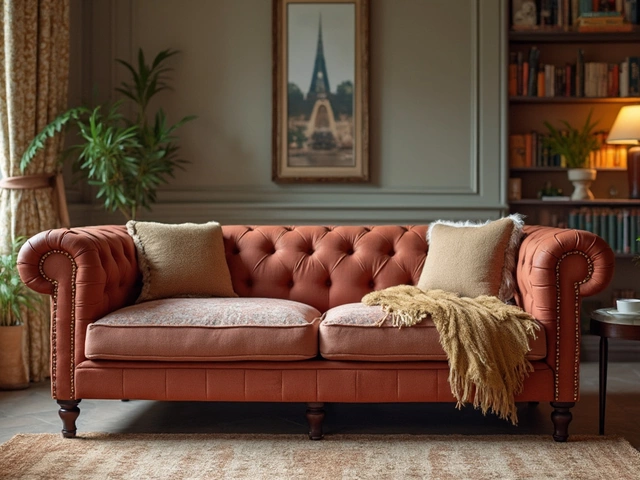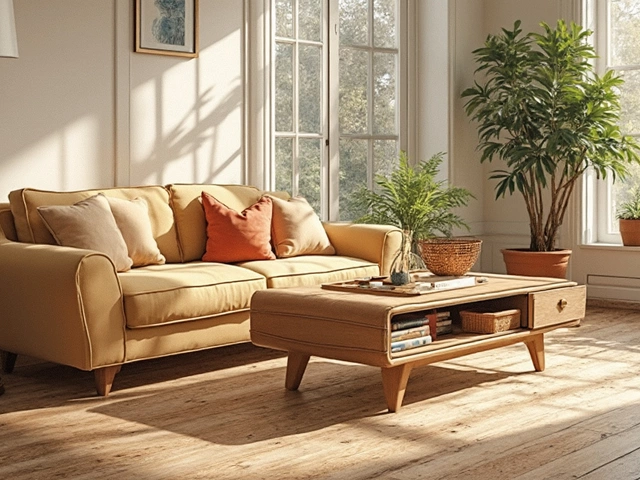Imagine walking into a hushed room where history quietly rests next to ritual. There's a long, low, elegantly carved piece of furniture at the center. It's not an ordinary couch or a regular bed—though it looks a little like both. That, right there, is a funeral couch. Unlike what your mind might race to guess, it isn’t a sofa for mourners or a bench for prayers; it’s for the person being honored—quite literally, for the deceased. A funeral couch plays a silent but powerful role in funeral ceremonies across cultures and centuries, and it says more about respect, ritual, and remembrance than most obituary pages ever could.
What Exactly Is a Funeral Couch?
The phrase "funeral couch" might sound a bit mysterious at first. To put it simply, a funeral couch is a platform, often ornately made, used to display a deceased person before burial or cremation. You might have seen one in a movie set in Ancient Egypt or Rome—think of Cleopatra lying in state, draped in fabrics, surrounded by flickering lamps. Well, that’s not too far off. These platforms have been used since at least 1500 BC, making them one of humanity’s oldest pieces of mortuary equipment. Unlike a traditional coffin, a funeral couch is just that: a couch. The body usually rests in full view or sometimes under sheer veils, which means guests experience a level of grace and openness in the farewell that’s missing from the shadowy inside of a box.
But why call it a couch, when the word makes us think of Netflix and napping? It gets its name from the Latin "lectus funebris"—a bed or couch for funerals. Romans and Greeks used them both for the dead and the living; it just depended on the occasion. Historical records from Egypt describe "bier beds" built from dark woods, decorated with ivory or precious metals, while in India and other parts of Asia, funeral couches were often carved from aromatic sandalwood and brightened up with marigolds. Later, European nobles developed the "state bed" or hearse-couch for their own grand farewells. It was definitely a statement piece—you wanted folks to remember who you were, even as they said goodbye.
Funeral couches differ from biers, even though both carry the deceased. The key difference is display: a bier is typically a simple board or frame, where the coffin or body sits only during transit, but a funeral couch is designed for viewing—an important part of the ritual in cultures that value public mourning. These couches may feature plush cushions, draped silks, or even sculpted handles for carrying. Some include built-in candle holders or rails for flowers, letting family members participate in sharing tokens as guests pay their respects.
In the U.S. and Europe, funeral couches reached their peak popularity in the Victorian era. Parlors were designed specifically to accommodate them, and "parlor couches" soon evolved for both customary and everyday use. Those plush fainting couches you see in antique stores? Their forms are direct descendants of the funeral couch tradition, with function and mourning furniture slowly blending together. Check out the table below for a snapshot of their evolution:
| Era | Region | Main Features |
|---|---|---|
| Ancient Egypt | North Africa | Gold-inlaid wood, animal motif legs, sheer veils |
| Classical Greece/Rome | Europe | Low wooden platform, pillows, carved headboard |
| Victorian Era | Western Europe, U.S.A. | Heavy upholstery, handles, flower rails |
| Modern Times | Global | Simple, movable frames, often with antimicrobial fabric |
This historical furniture is more than just rare wood and velvet. It’s soaked with meaning. In some faiths, like Hinduism or Judaism, the body should remain visible so relatives can say individual farewells—sometimes even including washing or anointing, right there in the living room. In today’s Western funerals, couches have mostly given way to closed caskets, but some faiths (like Greek Orthodox) still use them to this day. Certain "green" funerals have started bringing them back, encouraging a gentler, less industrial send-off. So, while you probably won’t see one in your local funeral home unless you ask, the tradition hasn’t vanished. It’s just more hidden, waiting for families who want something more meaningful than the standard routine.
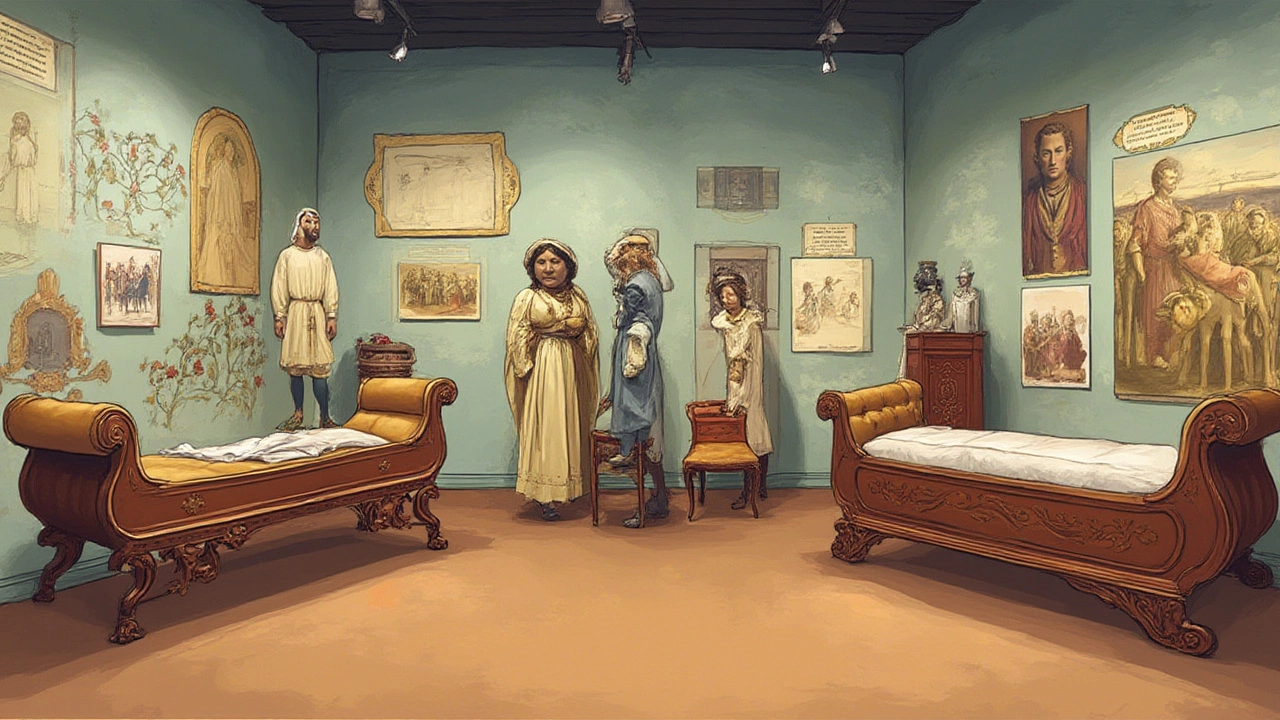
Funeral Couches vs. Coffins, Biors, and Other Mortuary Equipment
If you’re reading this and wondering, "Why not just use a coffin? What’s so special about a couch?"—you’re in good company. Even some funeral directors mix up the terms. Here’s the lowdown: a coffin is for burial, sealed and transported; a bier is a carrying surface (often on wheels nowadays), and a funeral couch is specifically for display, usually before the final service. In fancy funerals, you might see the full trifecta: body displayed on the funeral couch, then moved to a coffin, then wheeled away on a bier. Most modern funerals skip straight to the sealed coffin, but not all cultures keep that pace.
The type of body display isn’t just a stylistic choice. Some religious or cultural groups are very clear about rules. For example, in traditional Chinese funerals, the deceased is placed on a wooden couch draped in red, symbolizing respect and luck for the journey ahead. In Orthodox Christianity, the body stays visible for as long as family needs, with incense and candles burning on either side of the couch. A closed coffin, in these cases, would be a major faux pas. Meanwhile, in Japan, the ritual of "Kotsuage"—where family members pick up the bones after cremation—sometimes involves display platforms with private seating, not so different from the older funeral couch design.
Victorian England practically turned the "death parlor" into an art. Funeral couches became status symbols. Think fringe, velvet, ornate legs, embroidered silk pillows—the works. There are catalogs from the late 1800s offering coffins in "Rose Mahogany with Funeral Couch Attachments," promising that the deceased would look dignified and comfortable. It sounds strange now, but appearances mattered.
Funeral couches also played a role in reimagining public mourning. For example, during state funerals or major historical events, national leaders would "lie in state" on raised couches in capital rotundas or grand halls. Abraham Lincoln’s funeral train famously carried a special couch that allowed crowds to file past and pay final respects. If you’re curious, the original velvet is preserved at The Henry Ford museum in Michigan. In Europe, the funeral of Victor Hugo saw his body displayed on a purple-draped funeral couch on the Champs-Élysées—an event witnessed by over 2 million Parisians.
In modern times, the popularity of the funeral couch has dipped as people opt for simpler, more private ceremonies. But you’ll see custom-made funeral couches in high-profile funerals, religious ceremonies, and some "green" or home-based funerals. These can be collapsible, easier to transport, made of eco-friendly materials, or even handcrafted by families. If Grandma's handy with woodworking and wants something personal, that couch could be built right in her garage.
So, how does a funeral couch fit into today’s funeral planning? Some funeral homes will have an antique or reproduction couch in storage (sometimes you just have to ask). Experts tip: If your family or faith wants a period-accurate or open viewing, let the director know early. You can check local options online—search for "funeral home with display couch" alongside your city. Expect to pay extra, but not always as much as a custom casket. If you’re hosting a home funeral, there are DIY plans online; materials needed range from reclaimed wood to organic cotton for lining. Just ask your local laws about sanitary rules before building anything in the backyard.
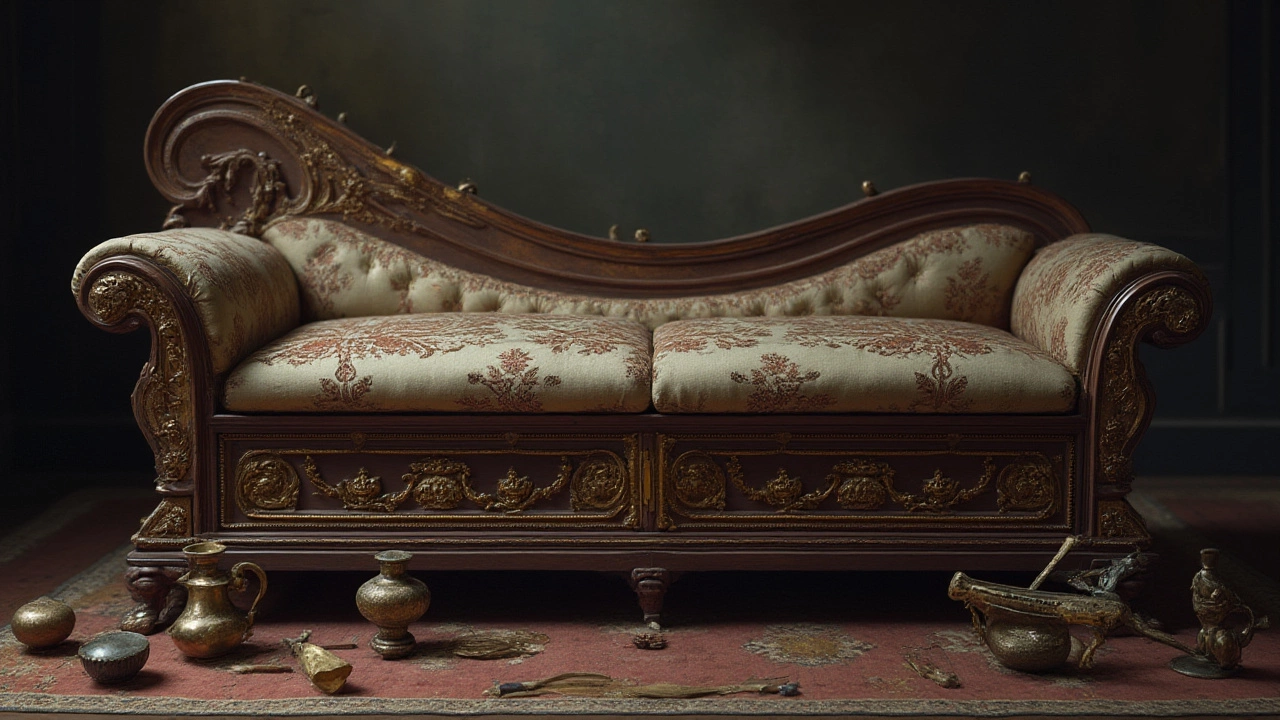
Tips, Symbolism, and Curious Facts About Funeral Couches
If you’re thinking about what kind of final goodbye fits your style, the funeral couch actually brings a bunch of unexpected perks and symbolism. There’s a reason it stuck around for thousands of years, right?
- Symbolism of Rest and Transition: The couch itself is a symbol—a resting place between life and death, not quite a bed (for sleep), not quite a chair (for living action). It sets a tone that this is a peaceful, gentle transition, not just a clinical event.
- Enhanced Personalization: Truth is, standard coffins and funeral homes often remove individuality from the process. When my friend’s family held a home funeral, they used a floral-draped funeral couch for her granddad, so each kid could place wildflowers on his chest. It felt kinder, more real.
- Flexibility for Rituals: Want anointing, candlelight, or an open circle around the deceased? Way easier with a funeral couch. The design makes participation easy for elders and kids. In Hindu funerals, this is non-negotiable. Ritual bathing, last words, and placing garlands all happen on the couch.
Here are a few practical tips if you’re thinking about using one:
- Ask your funeral director if they can provide, rent, or source a proper funeral couch (not all have one, but they can usually recommend a supplier).
- If your faith has a viewing period, specify how long you’ll need the couch. Some families prefer one that’s portable (wheeled frames are available for easy movement between rooms).
- Cushions and linings should be removable and washable—both for practical and emotional reasons. Some people like to keep the cloth or pillow as a memory.
- If you’re planning an eco-friendly or "green" funeral, go for a locally sourced, untreated wood frame with organic liners. There are even biodegradable upgrade options today.
People often forget just how personal funerary furniture can be. Choosing a couch, rather than a standard casket, can give the whole ceremony a vibe that’s softer, less about formality, and more about celebration. When my wife Cassandra and I talked about our own plans during a late-night chat—it’s a little weird, but everyone does it eventually—we both agreed: we want to go out on something like an old-world funeral couch with stories, food, and music in the room. Nothing too stuffy or grim. For us, it just seems right.
One more curious fact—some funeral couches from famous funerals have ended up in museums, prized for their artistry and the famous people who once rested on them. The Met in New York has an Egyptian funerary bed decked out in lion heads; it belonged to a royal, though nobody knows who for sure. All this symbolism, all these stories, bound to a single piece of furniture.
So next time you’re watching a period drama or wandering through an old estate, look for those unusual couches with extra-long seats or strange carvings—you might just be looking at a piece of funeral history, once at center stage during someone’s final, most important farewell.
